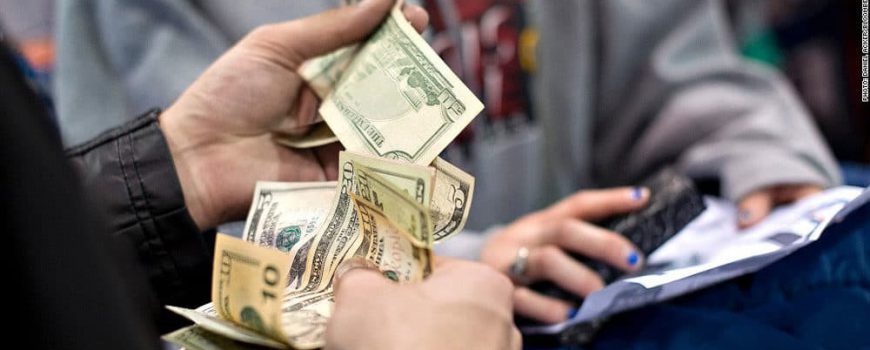)
Last month during the holiday season, as expected there was a rise in consumer spending as households bought more vehicles and took advantage of a variety of services amid rising wages, indicating sustained domestic demand could result in an uptick of economic growth starting early 2017. Inflation is also picking up, which if it doesn’t outpace the growth in wages, is largely considered part of a healthy growing economy. Both of those factors combined with a tightening labor market could put the Federal Reserve on track to raise interest rates three times this year in an effort to encourage consumers to begin saving more and banks to lend out more money, while ensuring inflation doesn’t spiral out of control.
After a 0.2% rise in inflation in November, the raw numbers indicate an increase in consumer spending (which accounts for over two thirds of all economic activity in America) nearly doubled in December to 0.5% per the Commerce Department. However, after adjusting for inflation, consumer spending last month actually increased by 0.1% from the previous month to 0.3%. The year saw a 3.8% rise in consumer spending overall, an improvement of 0.3% from the previous year indicating the trend is moving in positive direction. The US stock index futures and prices for the long-term US Treasury bonds were trading lower, and the dollar strengthened when compared to other currencies.
The Commerce Department’s report was released before the Fed’s two-day policy meeting beginning on Tuesday where the central bank is set to discuss the timing of the interest rate hikes throughout the year – though it is not expected to occur yet as it was just raised by 0.25% in December bringing the current rate to 0.75%. Economists are happy with the timing, because with inflation showing signs of picking up last month (the month over month increase doubling from 0.1% to 0.2%) the increasing interest rates could be used to help contain inflation and thus keeping Americans’ wallets from hurting. Over the last 12 months, the PCE price index (an accepted measure of inflation, the number the Federal Reserve uses) rose 1.6%, the largest increase for the past few years.
Though inflation rose by 0.1% last month as previously mentioned, wages grew by 0.3% overall, meaning consumers are seeing increased wages more quickly than prices are rising resulting in an overall positive outlook. The increase in consumer spending was noticed particularly in long lasting manufactured goods where it rose 1.4%, most of which going towards automobiles; and spending on services also over-performed checking in at a 0.4% rise. As spending, inflation, and wages all increased, savings also fell to the lowest level since May 2015, with the final numbers last month showing $768.4B across the nation.

